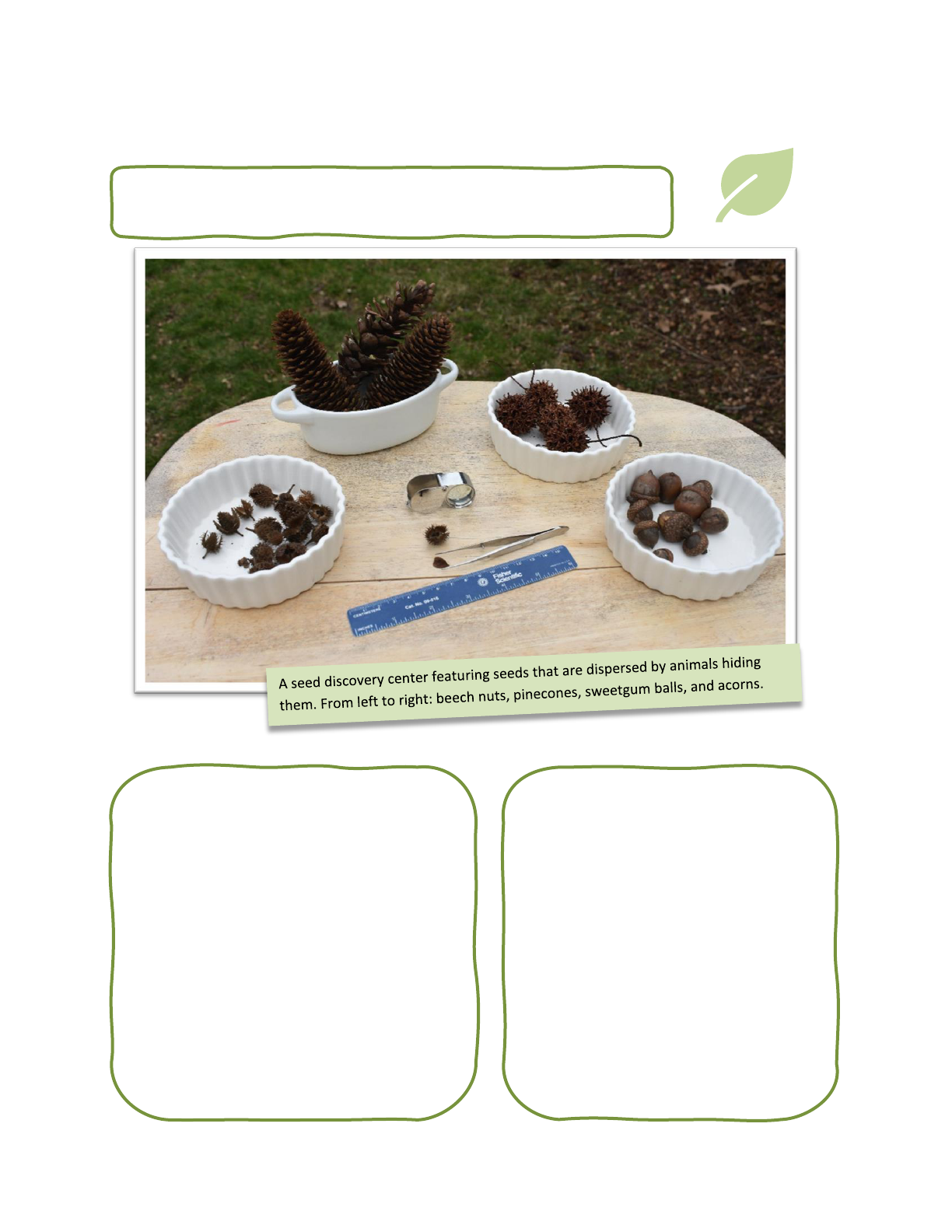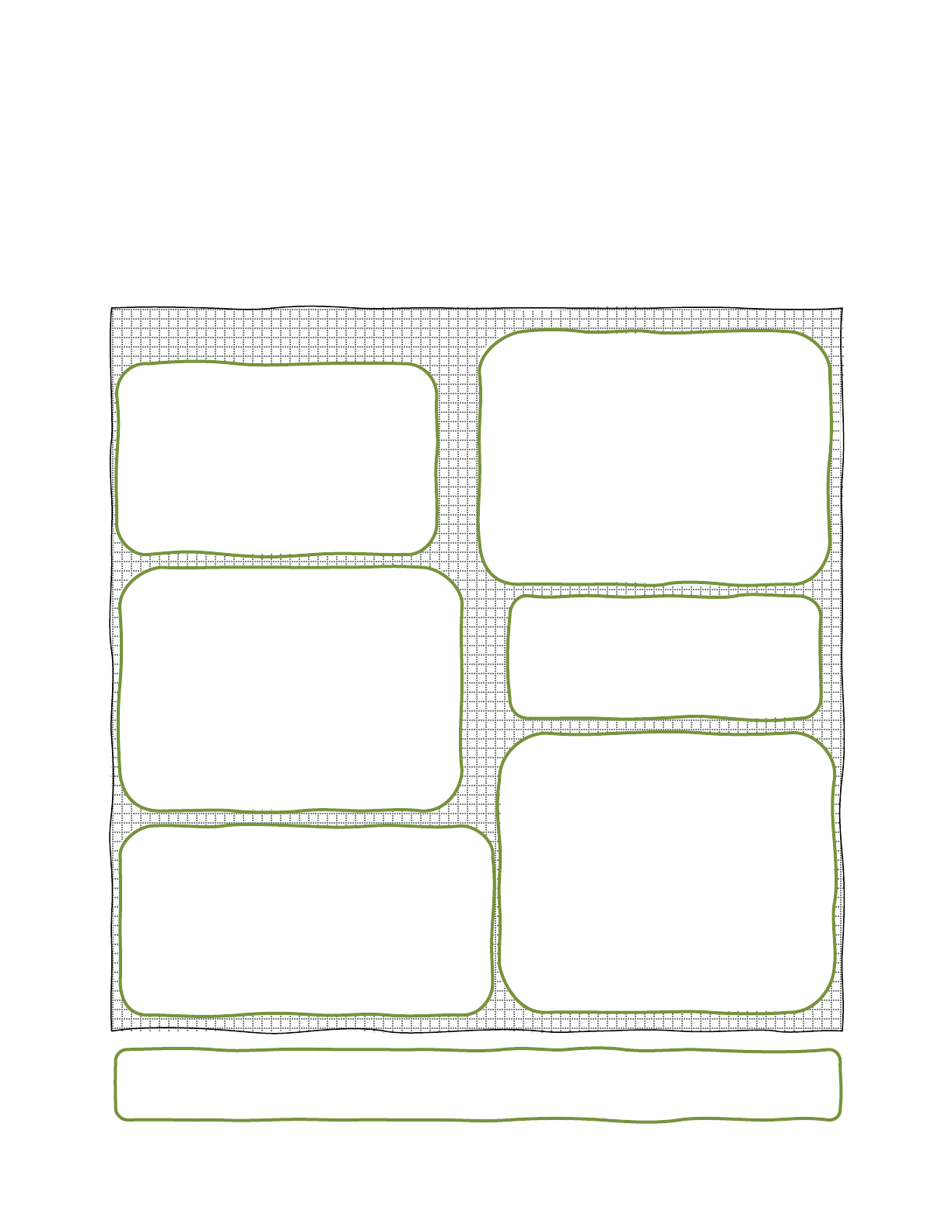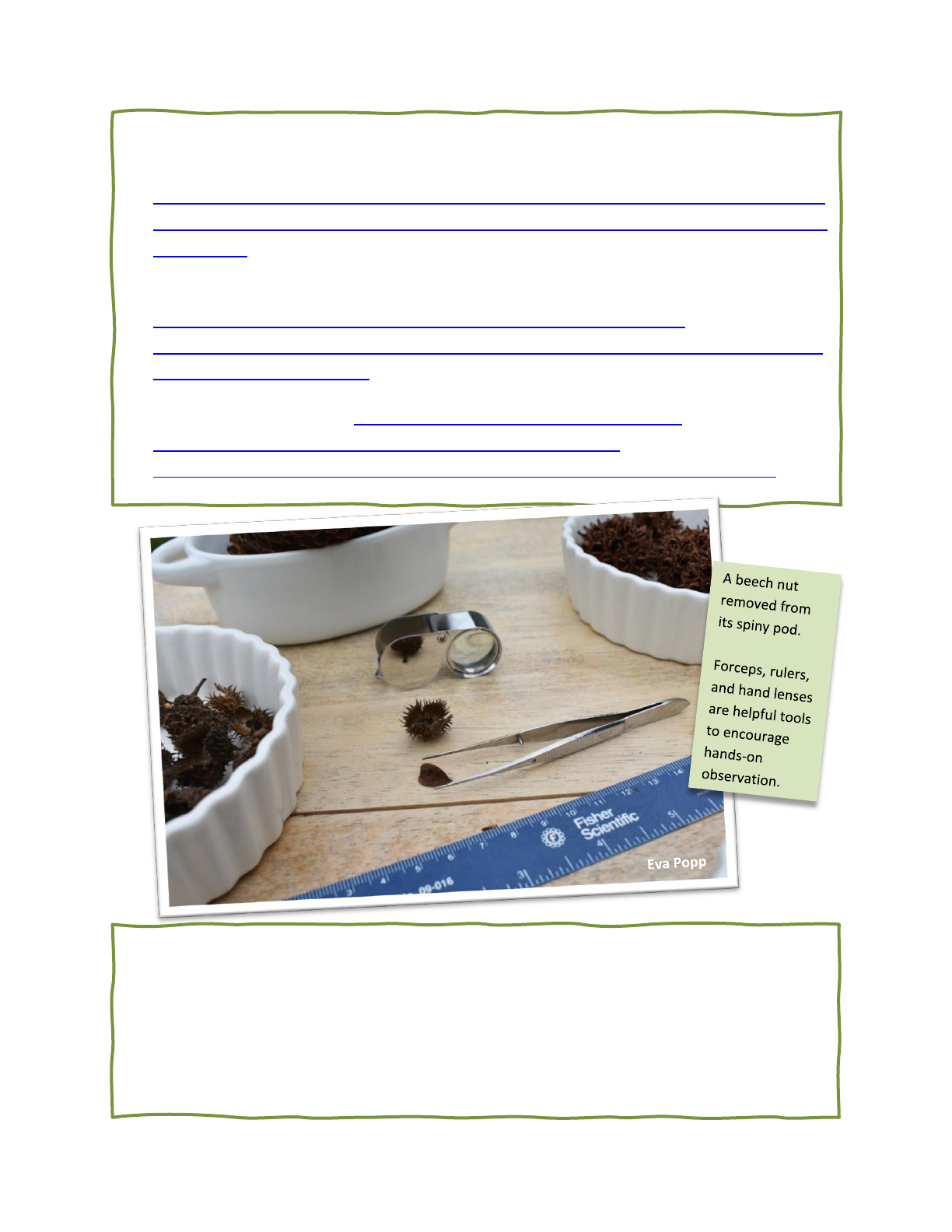
DRAFT Botanical Literacy Lesson Plan
April 5, 2024
Seed Dispersal Strategies
In this center activity students use hands-on observation to discover
different types of seeds and the traits that aid them in their dispersal.
2-LS2-2: Develop a simple model that
mimics the function of an animal in
dispersing seeds or pollinating plants.
MS-LS1-4: Use arguments based on
empirical evidence and scientific
reasoning to support an explanation for
how characteristic animal behaviors
and specialized plant structures affect
the probability of successful
reproduction of animals and plants
respectively.
• Compare and contrast physical
traits of seeds/seed pods
• Identify different methods of
seed dispersal
• Explain how a seed or seed pod’s
physical characteristics aids in its
dispersal
• Develop a story to demonstrate
how successful seed dispersal is
required for the survival of a
plant
NJSLS Connections:
Learning Objectives:
Eva Popp
2
nd
-MS

DRAFT Botanical Literacy Lesson Plan
April 5, 2024
Like pollination, seed dispersal is an important process vital to the reproduction of
plants. The evolutionary diversity of the botanical world is reflected in the variety of
strategies that plants have evolved for sending their seeds far and wide. Several types of
seed dispersal strategies are reliant on animals. Plants that employ a dispersal strategy of
being eaten by animals have small seeds surrounded by a fleshy fruit. Animals eat the fruit
and the seeds pass through their digestive tract unharmed. As the animal moves from place
to place, it leaves droppings that contain seeds that go on to sprout in the new location.
Other kinds of seeds are also moved by animals but are stuck to animals rather than
eaten by them. Called burrs, these seed pods are covered in small hooks that easily attach to
the fur of an animal. These burrs served to inspire the inventor of Velcro after he observed
his dog with burrs stuck in its fur. The last animal-facilitated seed dispersal strategy involves
animals that store food for the winter, like squirrels and chipmunks. These animals gather
food such as acorns and hickory nuts and bury them to retrieve later. Invariably, not every
cached nut is remembered and will eventually sprout and grow into a tree.
Some plants rely on wind or water rather than animals to move their seeds around.
Wind-dispersed seeds are lightweight and often have feathery hairs to allow them to be
carried by the wind. Plants that grow near to water often have water-dispersed seeds which
float on water and can be moved around by the current, instead of sinking to the bottom. A
different adaptation to water dispersal is seen in the Water chestnut (Trapa natans). This
invasive aquatic plant has evolved sharp points on its seed pods to help the pod anchor into
mud where the seeds can sprout.
The last seed dispersal strategy does not rely on an outside force to move seeds from
place to place. Some plants have seed pods that explode, also known as ballistic dispersal.
As the outer seed pods dry out and shrink, the pressure inside the pods increases until they
burst, sending the seeds flying. Some plants, like our native jewelweed (Impateins capensis),
require just a light touch to trigger their seed pods to burst.
Instructor Background
Supplies
● Seed dispersal center observation sheet
● Seeds or seedpods for each dispersal method center
● Pencils
● Hand lens or magnifying glasses
● Forceps, dissection probes, and other age-appropriate tools to aid in observation
Optional: Clipboards or recycled cardboard to lean on
Seed Discovery Centers

DRAFT Botanical Literacy Lesson Plan
April 5, 2024
Seed Discovery Center Setup
Set up four to six seed dispersal centers each labeled with a number around the
classroom. Each center will feature a different seed dispersal method. For each dispersal
method include several different kinds of seeds and seed pods. Using actual plant
material is ideal, but pictures or illustrations would also suffice. Also provide magnifying
glasses, tweezers, and other observation tools.
Seed Dispersal Strategies
Exploding Pods
• Jewelweed (Impateins capensis)
• Violet (Sororia spp.)
• Garlic mustard (Alliaria petiolata)
cedar wood
Eaten by Animals
• Blackberry/raspberry (Rubus spp.)
• Blueberry (Vaccinium spp.)
• Cherry (Prunus spp.)
• Crabapple (Malus spp.)
• Callery pear (Pyrus calleryana)
• Holly (Ilex spp.)
• Serviceberry (Amelanchier spp.)
• Pokeweed (Phytolacca americana)
Blown by the Wind
• Dandelion (Taraxacum officinale)
• Milkweed (Asclepias spp.)
• Dogbane (Apocynum spp.)
• Maple (Acer spp.)
• Cattail (Typha spp.)
• Goldenrod (Solidago spp.)
• Tulip poplar (Liriodendron tulipifera)
Mothballs and red cedar wood
Moved by Water
• Cattail (Typha spp.)
• Iris (Iris spp.)
• Button bush (Cephalanthus occidentalis)
• Water chestnut (Trapa natans)
• Coconut (Cocos nucifera)
Hidden by Animals
• Oak acorns (Quercus spp.)
• Hickory nuts (Carya spp.)
• Beech nuts (Fagus spp.)
• Walnuts (Juglans spp.)
• Sunflower seeds (Helianthus spp.)
• Pinecone nuts (conifers including
Pinus spp., Picea spp., Abies spp.)
Stuck to Animals
• Tickseed (Coreopsis lanceolata)
• Cocklebur (Xanthium spinosum)
• Burdock (Arctium spp.)
• Hitchhikers (Hackelia virginiana)
• Tick trefoil (Desmodium spp.)
iNaturalist can be used to locate particular plant species or groups in your area to
source material for the centers.

DRAFT Botanical Literacy Lesson Plan
April 5, 2024
Seed Discovery Center Procedure
Introduction
1. Show a dandelion in seed (white and puffy, not yellow). Ask questions to start a
discussion: “What is this?”, “What do we do when we find a dandelion?” (Blow on it!),
“What happens when we blow the dandelion?”, “What are the things that blow away?”,
“Why does the plant do this?”, “What happens to the seeds?”, “Why does the plant
want its seeds to go as far as possible?”.
2. If not addressed in the discussion, explain: “Plants want their seeds to move away, or
disperse, as far as possible to grow lots of new plants. By sending the seeds far away, the
baby plants will have more room to grow and will not take water or sunlight from the
parent plant. In this way, both the parent plant and new baby plants will have better
chances of survival”.
3. Introduce discovery center activity: “Today we will look at all kinds of different seeds and
try to guess how they move”.
Activity
1. Share instructions and behavior expectations
for the center activity and for the use of the
observation tools. Provide a demonstration
for the observation tools if using. Hand out
Seed Discovery Center worksheets.
2. Split students into groups to rotate between
centers. On their worksheet, students record
observations using text or illustration of the
seeds at each center in the corresponding
box. Then, students will write their educated
guess of the method of seed dispersal
featured in each center based on the seeds’
traits. Students may brainstorm with a
partner or group to help come to a
conclusion. For younger children, you may
provide them with the options of the different
seed dispersal methods to choose from.
Share and Discuss
Survey the class to share their
guesses for each center’s seed
dispersal method.
Reveal the dispersal methods
featured in each center and direct
the children to correct their
worksheets if they guessed
incorrectly. Explain each dispersal
method. Discuss:
• What traits were clues to the
seeds’ dispersal strategies?
• Which seed dispersal method is
most efficient and why?
• Why do different plants use
different methods of seed
dispersal?
Videos of different seed dispersal methods are
linked in the Resources section.

DRAFT Botanical Literacy Lesson Plan
April 5, 2024
Design-a-Seed Worksheet
Invite students to invent their own
seeds by completing the Design-a-Seed
worksheet.
Students will describe the method by
which their seed is dispersed and list 2-3
characteristics of the seed which aid in
its dispersal.
Students will also provide 2-3 extra
characteristics about the seeds’ color,
shape, size, texture. The students will
then draw, color, and label the seed and
write a paragraph about how its traits
assist in its dispersal.
Seed Storyboard Worksheet
1. Read The Tiny Seed by Eric Carle or another book listed below. After reading, explain
to students that we will be writing our own seed story. Have them review their
Design-a-Seed worksheet or complete the worksheet if not already completed.
2. Direct students to write a story about their seed inspired by A Tiny Seed using the
Design-a-Seed Storyboard worksheet as an outline. Ask questions to inspire their
imaginations: “how far will the seed travel?” “Where does it finally begin to grow
and how?” “What does it grow into?”
3. Invite students to read their story aloud to a partner or to the class. To further extend
the activity, have students use their storyboard as a guide to create a storybook with
illustrations or put on a skit with props.
Extension Activities
Cattails (Typha spp.) are common wetland plants
whose persistent fruits are full of tiny seeds borne
on fluffs that easily disperse on the wind or water.

DRAFT Botanical Literacy Lesson Plan
April 5, 2024
Materials
● Seed Centers worksheet
https://www.canva.com/design/DAFiorM9ae8/3X8B6MEK67HLCKMqFWysjw/edit?utm_
content=DAFiorM9ae8&utm_campaign=designshare&utm_medium=link2&utm_source=
sharebutton
● Design-a-Seed worksheet
https://www.canva.com/design/DAFm9jP3ITQ/xkMe_P7U0jKLTEZ-9a-
HAg/edit?utm_content=DAFm9jP3ITQ&utm_campaign=designshare&utm_medium=link
2&utm_source=sharebutton
● Design-a-Seed storyboard https://www.canva.com/design/DAFm9q0-
pkE/1cF_h3007_2nZy-fcBm7lA/edit?utm_content=DAFm9q0-
pkE&utm_campaign=designshare&utm_medium=link2&utm_source=sharebutton
Storybooks
● A Tiny Seed by Eric Carle
● Seeds Move! by Robin Page
● Flip, Float, Fly: Seeds on the Move by JoAnn Early Macken

DRAFT Botanical Literacy Lesson Plan
April 5, 2024
Resources
An article exploring a seed dispersal mystery with an unexpected answer:
https://www.americanforests.org/article/the-trees-that-miss-the-mammoths/
Seed Dispersal Videos:
● Exploding pods
○ Jewelweed (Impatiens capensis):
https://www.youtube.com/watch?v=X7wdJKL2TVM&ab_channel=SibleyGuides
○ Violets (Viola sp.), touch-me-not, squirting cucumber:
https://www.youtube.com/watch?v=OB0P3mx_lxY&ab_channel=VidhyaPeetha
m_5th
● Wind-dispersed
○ Maple samaras, or “helicopters”
■ https://www.youtube.com/watch?v=5-
7GIrn99mQ&ab_channel=7Arleth7
○ Cattails
■ https://www.youtube.com/watch?v=G57KXRGGMXw&ab_channel=There
saWillis
■ https://www.youtube.com/watch?v=9uzmVv3ni2s&ab_channel=CaroleSe
villaBrown
● Water-dispersed
○ https://www.youtube.com/watch?v=_y1U7xCHGmY&ab_channel=universitymou
ntunion
● Stuck to animals
○ Invention of Velcro: https://www.youtube.com/watch?v=x7-t-
9WzjGA&ab_channel=SciShowKids
○ Burdock:
https://www.youtube.com/watch?v=8ZLv3xAjH3Q&ab_channel=globalzoo
● Hidden by animals
○ https://www.youtube.com/watch?v=yYYkzciiCW4&ab_channel=TamesideCitizen
● Eaten by animals
○ https://www.youtube.com/watch?v=6B4nHCtX4G0&ab_channel=JoAlwood
